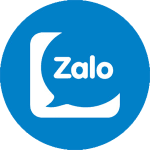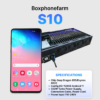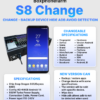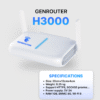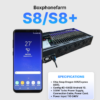The Facebook Ad Account Ban delivers a sinking feeling every digital marketer knows too well. You open your dashboard, ready to scale your winning campaigns, only to be hit with the stark red alert: “Your ad account has been disabled.” In an instant, campaigns halt, revenue streams freeze, and frustration surges. When that status appears, it’s like a digital door slamming in your face—and the financial impact can be devastating.
While many guides point to ad copy or creative violations, the truth is often buried deeper within your technical infrastructure. Facebook’s AI has become incredibly sophisticated, not just at what you’re advertising, but how you’re operating. This article will bypass the usual advice on policy compliance and dive into the technical root causes of ad account bans. More importantly, we’ll outline a robust, infrastructure-based solution to protect your assets and build a resilient advertising operation for the long term.
The Root Causes of a Disabled Facebook Ad Account: Beyond Policy Violations
Facebook’s primary goal is to protect its users and the integrity of its platform. To do this, its risk-detection algorithms look for patterns that suggest inauthentic or high-risk behavior. Often, a Facebook ad account disabled issue isn’t due to a single ad but a collection of technical red flags that paint a suspicious picture.

1. Inconsistent Digital Footprints
Imagine a person logging into their bank from their home in New York, then two minutes later from a cafe in Tokyo, and five minutes after that from a server in Germany. This is a massive red flag. Facebook applies the same logic to your ad accounts.
- Inconsistent Logins: Accessing the same ad account from different devices, IP addresses, and geographical locations in a short period triggers alarms. This is common for teams working remotely or using standard VPNs.
- Browser Fingerprint Discrepancies: Every browser has a unique “fingerprint” composed of dozens of data points (screen resolution, fonts, plugins, OS). When this fingerprint changes drastically with each login, it suggests you aren’t a consistent, single user.
2. Flagged or Suspicious Payment Methods
Your payment method is a core part of your identity on the platform. Any inconsistency or association with risky behavior can lead to an immediate ban.
- Mismatched Information: Using a credit card where the billing address or name doesn’t match the account information is a common trigger.
- Low-Trust Cards: Virtual credit cards (VCCs) or prepaid cards are often seen as higher risk than established bank-issued credit or debit cards.
- Payment Method Contamination: Using a single payment method across multiple ad accounts, especially if one of those accounts gets disabled, creates a toxic link. The “contamination” spreads, and Facebook may preemptively disable all associated accounts.
3. Association with Banned Assets (The “Bad Neighborhood” Effect)
This is one of the most challenging problems. Facebook’s algorithm is a master at connecting dots. If your new ad account shares any link—no matter how small—with a previously banned account, it will likely be disabled.
- IP Address Overlap: Creating a new account from the same IP address used by a previously banned account is the most common mistake.
- Shared Browser Fingerprints: If you don’t clear your digital slate properly, your new account can inherit the “bad reputation” of an old one.
- Linked Business Managers or Profiles: If a personal profile or Business Manager has been restricted, any new ad accounts created under it are immediately at high risk.
Effectively, solving the Facebook ad account disabled problem requires you to think less like a marketer and more like a security expert. You need to build a clean, isolated, and consistent operational environment for every single advertising asset.
The Infrastructure Solution: Building a Fortress for Your Ad Accounts
The only sustainable, long-term solution is to treat each ad account as a completely separate identity. This means absolute isolation of its digital fingerprint, network connection, and payment details. This is where a professional-grade infrastructure becomes non-negotiable.
Step 1: The Principle of Absolute Isolation
Every ad profile you manage must exist in its own unique, sandboxed environment. There can be zero overlap. This requires control over three key layers:
- The Browser Layer: Each profile needs a unique browser fingerprint.
- The Network Layer: Each profile needs a clean, dedicated IP address.
- The Management Layer: You need a way to efficiently manage these dozens or hundreds of isolated profiles without losing your mind.
Step 2: The Role of Anti-Detect Browsers
An anti-detect browser is a specialized tool designed to create and manage multiple unique browser environments. Instead of just clearing cookies, it spoofs the entire browser fingerprint—from the User-Agent string and screen resolution to WebGL rendering and canvas hashes. This makes each profile appear to Facebook as a completely separate, legitimate user on a different computer. While several options exist, integrating this capability into a larger automation workflow is where the real power lies. The GenFarmer ecosystem is built to manage these unique sessions at scale.
Step 3: The Critical Importance of Clean Proxies
An anti-detect browser is only half the battle. If all your unique browser profiles connect from the same IP address, you’ve achieved nothing. This is where proxies are essential, but not all proxies are created equal.
- Datacenter Proxies: These are cheap but easily identifiable. Facebook knows the IP ranges of major data centers and treats traffic from them with high suspicion. Avoid them for ad accounts.
- Residential & Mobile Proxies: These are IP addresses assigned by Internet Service Providers (ISPs) to real homes and mobile devices. They are seen as the highest-quality, most legitimate IPs. For each ad account, you must use a dedicated, clean residential or mobile proxy that has not been flagged or used by anyone else.
At GenFarmer, we understand that network integrity is paramount. That’s why we provide robust hardware solutions like our Router and MiniPC devices, designed to manage multiple clean network connections, ensuring each of your profiles has a pristine, trustworthy IP address.
The GenFarmer Workflow: Managing Isolated Profiles at Scale
Creating one isolated profile is easy. Creating and managing hundreds is an operational nightmare without the right platform. The GenFarmer no-coding automation platform allows you to centralize control over your entire isolated infrastructure.
Here’s how a professional workflow looks:
- Setup: For each ad account, you create a new profile within the GenFarmer platform. You assign it a unique, high-quality residential proxy from your pool.
- Automation: You build simple automation scripts without writing any code. These scripts can perform crucial tasks like daily logins, checking notifications, and warming up the account by browsing pages or liking posts. This creates a history of legitimate, human-like activity. Our GenFarmer Facebook Trust and GenFarmer Facebook Boost solutions are specifically designed for this, using AI to mimic real user behavior.
- Monitoring: From a single dashboard, you can oversee the status of all your ad accounts. The automation can flag any accounts that require manual review, such as those with ad rejections or warnings, allowing you to intervene before a disabled Facebook ad account becomes a reality.
- Scaling: When you need to add new accounts, you simply replicate the process, ensuring each new asset is born into its own clean, isolated environment. This scalable approach is impossible to manage manually but is streamlined through our platform.
Conclusion: Proactive Management is the Only Solution
Reacting to a Facebook ad account disabled notice is a losing battle. The appeals process is often slow and opaque, and by the time you’re banned, the damage is done. The only lasting solution is to shift your mindset from reactive fixing to proactive infrastructure management.
By building a foundation of absolute isolation for each ad account using anti-detect browsers, clean residential proxies, and a powerful automation platform, you are no longer playing by Facebook’s rules—you are building a system that is inherently compliant from a technical standpoint. This is the professional approach to digital advertising in today’s high-stakes environment.
Don’t let your business be at the mercy of an algorithm. Take control of your infrastructure. At GenFarmer, we provide the end-to-end ecosystem to make this possible. From powerful Box Phone Farm hardware and Cloud Phones for ultimate mobile identity isolation to our intelligent automation software like GenFarmer Facebook Boost, we give you the tools to build a resilient and scalable advertising operation. Stop fighting fires and start building your fortress.






